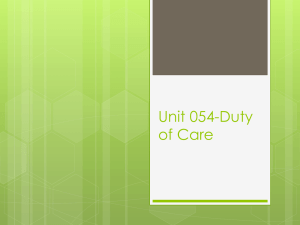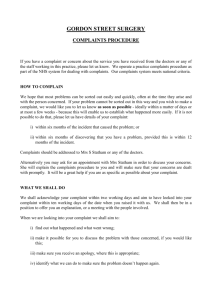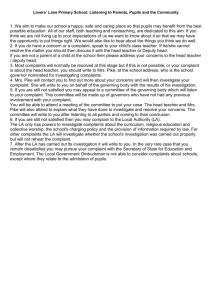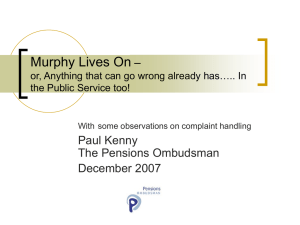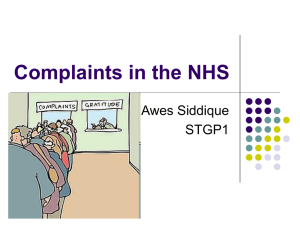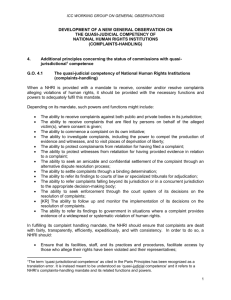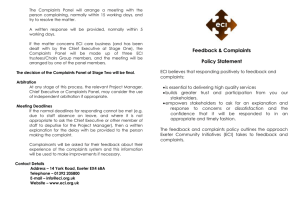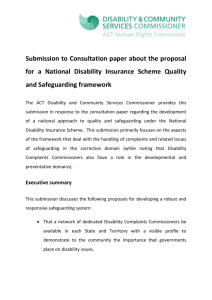Template 18: Feedback and Complaints Fact Sheet
advertisement
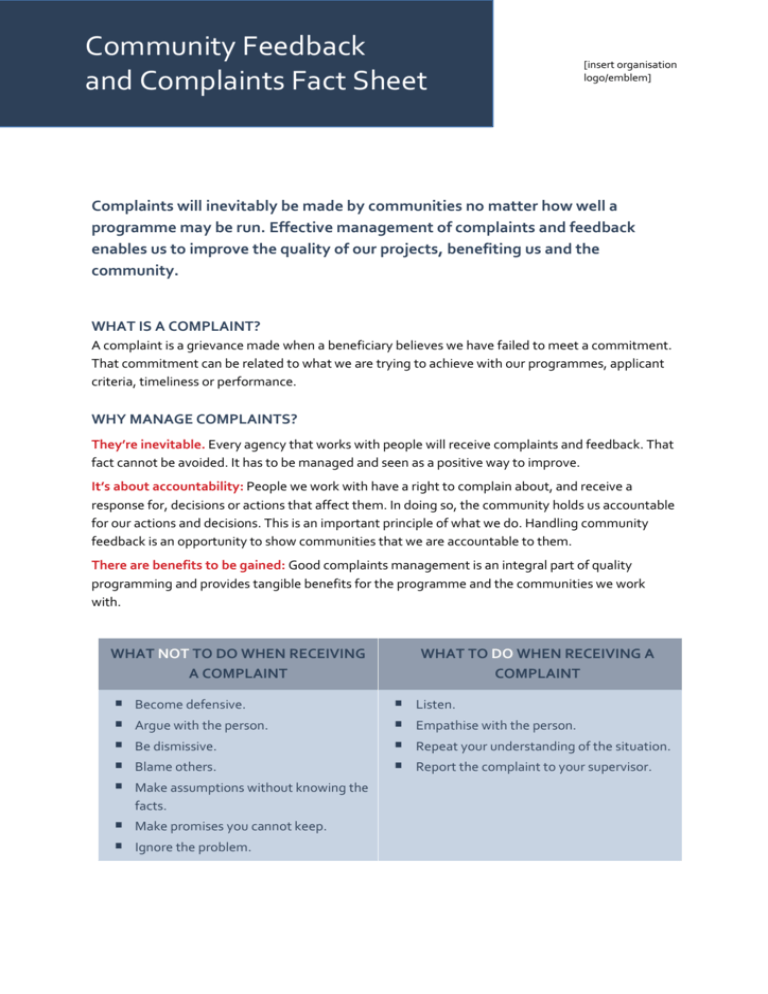
Community Feedback and Complaints Fact Sheet [insert organisation logo/emblem] Complaints will inevitably be made by communities no matter how well a programme may be run. Effective management of complaints and feedback enables us to improve the quality of our projects, benefiting us and the community. WHAT IS A COMPLAINT? A complaint is a grievance made when a beneficiary believes we have failed to meet a commitment. That commitment can be related to what we are trying to achieve with our programmes, applicant criteria, timeliness or performance. WHY MANAGE COMPLAINTS? They’re inevitable. Every agency that works with people will receive complaints and feedback. That fact cannot be avoided. It has to be managed and seen as a positive way to improve. It’s about accountability: People we work with have a right to complain about, and receive a response for, decisions or actions that affect them. In doing so, the community holds us accountable for our actions and decisions. This is an important principle of what we do. Handling community feedback is an opportunity to show communities that we are accountable to them. There are benefits to be gained: Good complaints management is an integral part of quality programming and provides tangible benefits for the programme and the communities we work with. WHAT NOT TO DO WHEN RECEIVING A COMPLAINT Become defensive. Make promises you cannot keep. Argue with the person. Be dismissive. Blame others. Make assumptions without knowing the facts. Ignore the problem. WHAT TO DO WHEN RECEIVING A COMPLAINT Listen. Empathise with the person. Repeat your understanding of the situation. Report the complaint to your supervisor. SO WHAT ARE THE BENEFITS OF A COMPLAINTS SYSTEM? Effective community complaints management systems: improve the quality of our programmes, by providing information about the experiences of communities and beneficiaries restore trust and confidence identify areas that need improvement enable poor decisions to be rectified quickly and efficiently promote a culture of transparency and accountability prevent complaints from escalating, a situation that can be resource intensive and lead to adverse outcomes reduce stress on staff and member volunteers. THE 5 ELEMENTS The 5 elements of managing community complaints:1 1. Visibility and access: mechanisms and strategies are put in place to provide beneficiary communities with readily available information on where and how to complain, how the complaint will be managed as well as reasonable assistance to make a complaint by staff. 2. Responsiveness: mechanisms and strategies are in place to: ensure staff know the complaints system and how it works, complaints are responded to in a ‘timely manner’, timeframes are used and complaints monitored and participants advised of progress. 3. Assessment and action: complaints are assessed and action taken based on fairness and objectively. 4. Feedback: is provided to complainants in a timely manner regarding outcomes and review mechanisms. Internally within the organisation potential system improvements are identified and acted upon. 5. Monitoring effectiveness: of the community complaints and feedback system is done regularly and a designated staff member tracks complaint statistics and identifies trends. This fact sheet adapted from: World Vision. (2007). Community Complaints Fact Sheet 1 Developed by World Vision (2007) as part of programme certification by the Humanitarian Accountability Partnership
